From ancient times, the serpent has captivated human imagination, appearing in various cultures and mythologies around the world. Its symbolism is multi-faceted and often shrouded in mystery, with interpretations ranging from wisdom and rebirth to evil and temptation. In this article, we will explore the intriguing significance of serpents in different cultures, delving into their roles within the mythologies of ancient Egypt, Greece, Hinduism, Norse, Mesoamerican cultures, and biblical references. Join us on this journey as we unravel the enigmatic symbolism of serpents that has fascinated civilizations throughout history.
Contents
- The Serpent in Ancient Egyptian Culture
- The Serpent in Greek Mythology
- The Serpent in Hinduism
- The Serpent in Norse Mythology
- The Serpent in Mesoamerican Cultures
- The Serpent in Biblical References
- Conclusion
-
Frequently Asked Questions
- 1. How did the serpent symbolize rebirth and renewal in ancient Egyptian culture?
- 2. Who was the goddess Wadjet in ancient Egypt and what role did she play?
- 3. What is the significance of the ouroboros symbol in ancient Egypt?
- 4. How did the serpent feature in Egyptian mythology?
- 5. Did the serpent symbolize wisdom and knowledge in Greek mythology?
- 6. Who was Medusa in Greek mythology and what role did the serpent play in her story?
- 7. What was the role of serpents in the Oracles of Delphi in Greek mythology?
- 8. How is the serpent depicted in Hinduism?
- 9. Who is the serpent god Shesha in Hindu mythology?
- 10. How does the serpent feature in biblical references?
- References
-
Frequently Asked Questions
- 1. What is the significance of serpents in different cultures?
- 2. Why are serpents associated with rebirth and renewal?
- 3. How are serpents portrayed in Egyptian mythology?
- 4. What is the connection between serpents and wisdom in Greek mythology?
- 5. Who is Medusa and how is she connected to serpents in Greek mythology?
- 6. What role did serpents play in Hinduism?
- 7. Who is Jormungandr in Norse mythology?
- 8. Who is Quetzalcoatl and what is their significance in Mesoamerican cultures?
- 9. What is the biblical significance of serpents?
- 10. Why are serpents such a prevalent symbol in different cultures?
- References
- Read More
The Serpent in Ancient Egyptian Culture
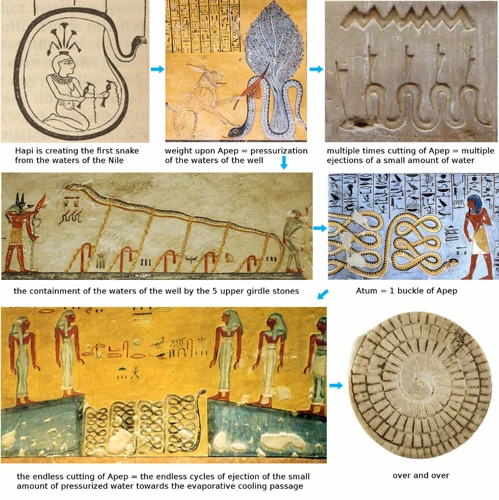
In ancient Egyptian culture, the serpent held profound symbolism and was intertwined with their religious beliefs and mythology. The serpent, often depicted as a cobra, was revered as a powerful symbol of rebirth and renewal. It represented the concept of eternal life and the cyclical nature of existence. The image of the ouroboros, a serpent swallowing its own tail, was a prominent motif representing the continuous cycle of creation and destruction. The goddess Wadjet, depicted as a cobra, was the protector and patron of the pharaohs, offering her divine guidance and warding off evil. Additionally, the serpent played a role in Egyptian mythology, with the snake god Apophis as the embodiment of chaos and the adversary of the sun god Ra. So, the serpent in ancient Egyptian culture encompassed a complex mixture of creation, protection, and opposition, showcasing the intricate beliefs of this civilization.
The Serpent as a Symbol of Rebirth and Renewal
The serpent’s symbolism as a representation of rebirth and renewal holds significant importance in various cultures, including ancient Egypt. In Egyptian mythology, the serpent shedding its skin became a powerful metaphor for cyclical transformation. This shedding process represented the cycles of life, death, and rebirth. The ouroboros, a serpent swallowing its own tail, was emblematic of eternity, the continuous cycle of creation and destruction. This symbol demonstrated the belief in the perpetuity of life and the ever-renewing nature of the universe. The association of the serpent with the concept of rebirth and renewal also extended to the goddess Wadjet, often depicted as a cobra. Wadjet was considered the protector and patroness of the pharaohs, offering them divine guidance in their journey toward eternal life. The serpent’s ability to shed its skin and emerge renewed and revitalized became a profound symbol of spiritual transformation, emphasizing the endless cycles of life and the eternal nature of the soul. This symbolism of rebirth and renewal represented by the serpent in ancient Egyptian culture thus reflects the belief in the continuity and regenerative nature of life.
The Serpent in Egyptian Mythology
In Egyptian mythology, the serpent held a significant place, appearing in various tales and symbolizing different aspects of their beliefs. One prominent serpent figure in Egyptian mythology is Apophis, also known as Apep. Apophis represented chaos and was depicted as a giant serpent or dragon, intent on destroying the sun god Ra and bringing about darkness and disorder. Egyptians believed that Apophis would try to impede the sun god’s journey through the underworld every night, causing a solar eclipse. This eternal struggle between Ra and Apophis showcased the ongoing battle between order and chaos in Egyptian cosmology. Another important serpent-like deity in Egyptian mythology is the goddess Wadjet or Buto, often depicted as a cobra. Wadjet was associated with protection, royalty, and divine guidance. She was believed to spit fire at Ra’s enemies and was revered as the patron goddess of the pharaohs. The serpent symbolism extended to the pharaohs themselves, with the crowns they wore often featuring the Uraeus, a stylized cobra representing divine authority and protection. The complex intertwining of serpents in Egyptian mythology showcases their belief in the eternal struggle between chaos and order, the protection and guidance offered by serpent deities, and the divine status of the pharaohs. These mythological tales and symbols continue to intrigue and fascinate us to this day.
The Serpent in Greek Mythology
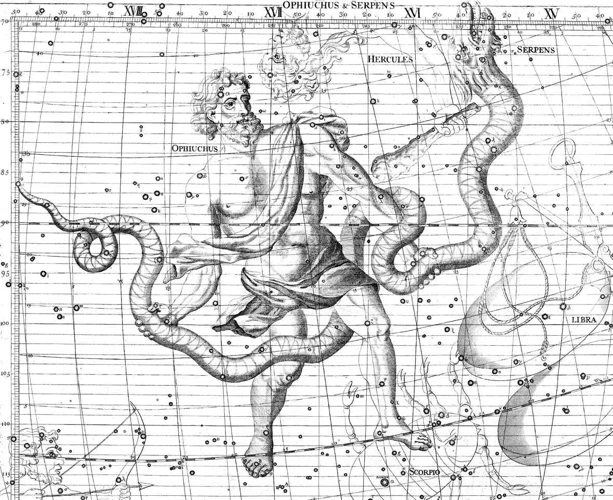
In Greek mythology, the serpent held a prominent place, symbolizing wisdom, knowledge, and both constructive and destructive forces. The serpent was closely associated with the god Apollo and the Oracle of Delphi. According to the myth, when Apollo came to Delphi, he encountered the giant serpent Python and slew it, taking its place as the guardian of the sacred oracle. The serpent at Delphi became a revered symbol of knowledge and prophecy, as the priestess, known as the Pythia, would enter a trance-like state and relay cryptic messages believed to be from the god. Additionally, in the story of Medusa, the serpent played a significant role. Medusa, once a beautiful woman, was cursed by the goddess Athena and transformed into a monstrous creature with snakes for hair. Anyone who looked directly into her eyes would be turned to stone. This portrayal of the serpent in Greek mythology reveals its dual nature, symbolizing both wisdom and danger. So, the serpent in Greek mythology embodied the complexities of knowledge and the potential for both harm and enlightenment.
The Serpent as a Symbol of Wisdom and Knowledge
The serpent has long been associated with wisdom and knowledge across various cultures, including in Greek mythology. In Greek culture, serpents were often considered a symbol of wisdom due to their cunning and shrewd nature. This symbolism is prominently seen in the story of the Garden of Eden in Biblical references and the Greek myth of Athena and the Serpent. In the story of Athena, the goddess of wisdom, she encounters a serpent who serves as a guardian of an oracle. The serpent imparts its wisdom and knowledge to Athena, solidifying the serpent’s role as a symbol of wisdom in Greek mythology. Additionally, in the story of Medusa, a Gorgon monster cursed with a head of snakes, the serpents were believed to possess knowledge and prophetic power. Medusa’s gaze turned people to stone, representing the transformative power of knowledge and the ancient belief that wisdom could be both enlightening and dangerous. The association of serpents with wisdom and knowledge can also be found in the imagery of the medical profession, with the Rod of Asclepius, a staff with a snake coiled around it, symbolizing healing and medical expertise. This connection emphasizes the belief that to possess wisdom and knowledge is to possess the power of healing and understanding. Thus, the serpent’s symbolic significance as a representation of wisdom and knowledge spans across various cultures and mythologies, showcasing its enduring importance in human history. Ophiuchus is an astrological sign often associated with the serpent and is believed to symbolize the pursuit of knowledge and spiritual growth.
The Serpent in the Story of Medusa
In the story of Medusa from Greek mythology, the serpent plays a significant role in the transformation and downfall of the once-beautiful maiden. Medusa, originally a beautiful priestess in the temple of Athena, caught the attention of Poseidon, the god of the sea. In a fit of jealousy, Athena punished Medusa by transforming her into a hideous creature with snakes for hair, a curse that turned anyone who gazed into her eyes to stone. The serpents that adorned her head became a symbol of her monstrous nature and the consequence of her actions with Poseidon. This depiction of Medusa, with her serpentine appearance, served as a warning of the dangers of vanity and the consequences of defying the gods. The story of Medusa and her serpents is a reminder of the power of symbolism and how creatures like serpents can become synonymous with fear and caution.
The Serpent in the Oracles of Delphi
In the ancient Greek city of Delphi, the serpent held great significance in the practices of the renowned Oracle. The Oracle of Delphi was a revered priestess who served as a medium between the mortal and divine realms. It was believed that she received her prophetic visions and wisdom from the serpent Python, which dwelled within the sacred precinct. According to Greek mythology, Python was a monstrous serpent slain by the god Apollo. The Oracle’s prophetic powers were attributed to the remnants of Python’s essence that resided at the Temple of Apollo at Delphi. Pilgrims seeking guidance would present offerings and pose questions to the Oracle, who would enter a trance-like state, often accompanied by convulsions and frenzied speech. The interpretations of the Oracle’s cryptic utterances were carefully analyzed by priests. The serpent connection is seen through the Greek word for Python, “pythia,” which is derived from the root “pyth,” meaning “to rot” or “to decay,” possibly symbolizing the shedding of old beliefs or ideas before new ones could emerge. The serpent’s role in the Oracles of Delphi, acting as a conduit between the mortal realm and the divine, illustrates its association with wisdom, prophecy, and the mysteries of the universe. The Oracle’s influence extended far beyond the ancient Greek world, with leaders and individuals from various civilizations seeking her counsel and guidance.
The Serpent in Hinduism

In Hinduism, the serpent holds significant symbolism and plays various roles in religious and mythological narratives. One of the prominent representations is the serpent as a symbol of Kundalini energy, representing the dormant spiritual power within every individual. Kundalini, often depicted as a coiled serpent at the base of the spine, is believed to be awakened through spiritual practices and ascends through the central energy channel, known as the Sushumna, to unite with the divine energy at the crown of the head. This awakening leads to spiritual enlightenment and self-realization. Hindu mythology also includes the revered serpent god Shesha, who is often depicted as a majestic multi-headed serpent with Vishnu, the preserver god, resting upon him. Shesha symbolizes the cosmic balance, eternity, and the supportive energy that upholds the universe. The epic tale of Mahabharata features the story of Lord Krishna, who is depicted with a serpent named Sheshnaag around his neck, signifying his divine power and protection. The serpent’s significance in Hinduism thus reflects concepts of spiritual energy, cosmic balance, and divine guardianship.
The Serpent as a Symbol of Kundalini Energy
The Serpent in Hinduism holds a special significance as a symbol of Kundalini energy. Kundalini refers to the dormant spiritual energy within every individual, coiled like a serpent at the base of the spine. When awakened, this powerful energy rises through the seven chakras, or energy centers, in the body, leading to spiritual enlightenment. The serpent serves as a metaphor for this transformative energy, representing its coiled potential waiting to be awakened. In Hindu iconography, deities such as Lord Shiva are often depicted with a serpent coiled around their neck, symbolizing their mastery over the Kundalini energy. This concept is deeply ingrained in yogic and meditative practices, where practitioners aim to awaken this dormant energy and channel it upwards towards self-realization. The symbolism of the serpent as Kundalini energy highlights the profound spiritual journey and potential for inner transformation that exists within each individual. For more information on the compatibility of Zodiac signs and the Ophiuchus constellation, check out this article on Aquarius Compatibility with Ophiuchus.
The Serpent God Shesha
The Serpent God Shesha, also known as Ananta Shesha or Adishesha, holds a significant place in Hinduism. In Hindu mythology, Shesha is described as a massive, thousand-headed serpent who serves as the bed and canopy for Lord Vishnu, the preserver of the Universe. Shesha’s name itself holds profound meaning, translating to “the remainder” or “that which remains.” This symbolism suggests Shesha’s association with eternity, as he remains even after the dissolution of the universe.
According to Hindu beliefs, Shesha possesses immense power and represents the essence of purity, patience, and endurance. His many heads symbolize his vast knowledge and wisdom, and his thousand hoods represent his protective and nurturing nature. Shesha’s association with Lord Vishnu signifies his role in upholding the cosmic order and supporting the universe during its cycles of creation, preservation, and dissolution.
Shesha is also intricately linked to the concept of Kundalini energy, often represented as a coiled serpent located at the base of the spine. This dormant spiritual energy can be awakened through various spiritual practices, allowing individuals to attain higher states of consciousness and enlightenment. Shesha’s depiction as a serpent coiled comfortably beneath Lord Vishnu serves as a metaphor for the Kundalini energy that lies dormant within each person, waiting to be awakened.
In Hindu scriptures such as the Mahabharata, Shesha plays a significant role. He is depicted as the brother of Lord Vishnu’s avatar, Lord Krishna, and serves as his constant companion and advisor. Shesha’s presence alongside Lord Krishna highlights his protective role and his association with divine wisdom.
The Serpent God Shesha holds great importance in Hindu mythology and represents everlasting existence, wisdom, and the Kundalini energy. His association with Lord Vishnu and the cosmic order showcases the profound symbolism of serpents in Hindu culture, reflecting their significance in the search for spiritual enlightenment and divine connection. To learn more about serpent symbolism and its relevance in astrology, you can explore the importance of compatibility in Ophiuchus horoscope predictions.
The Serpent in the Story of Mahabharata
In the epic Indian tale of Mahabharata, the serpent plays a pivotal role, adding intrigue and symbolism to the narrative. One of the most famous serpent-related incidents in the Mahabharata is the story of Takshaka, the serpent king. According to the legend, Takshaka was responsible for the death of King Parikshit, the grandson of Arjuna and a descendant of the Pandavas. This event marked the beginning of the Kali Yuga, the current age of darkness and destruction in Hindu cosmology.
The encounter between Takshaka and King Parikshit is steeped in symbolism, highlighting the transient nature of life and the inevitability of death. It underscores the theme of fate and the consequences of one’s actions. King Parikshit was cursed by a sage named Shringi for an act of disrespect, and as a result, he met his demise at the fangs of Takshaka.
The story gains further complexity with the involvement of another prominent character, Ashwatthama. Ashwatthama, son of the great warrior Dronacharya, sought revenge for the deaths of his father and his comrades. Believing that the Pandavas were responsible for the carnage, he unleashed the Brahmastra, a powerful weapon, targeting the womb of Uttara, the pregnant wife of Arjuna’s son, Abhimanyu. Lord Krishna intervened and saved the unborn child, who would later play a significant role in the aftermath of the Mahabharata war.
Takshaka’s association with these critical events demonstrates the interconnectedness of characters and their actions, showcasing the intricate web of cause and effect in the Mahabharata. The serpent symbolizes the cosmic forces of destiny, karma, and the unrelenting grip of time.
It is worth mentioning that the story of the serpent in the Mahabharata goes beyond the incident involving Takshaka. Serpents also appear in other episodes, such as the sacrifice of the serpent Sarpasattra and the tale of Astika, the son of a sage who saved the Nagas (serpents) from a massacre. These additional narratives contribute to the multifaceted symbolism of serpents in the epic, reflecting themes of power, redemption, and the delicate balance between different realms of existence.
The Serpent in Norse Mythology
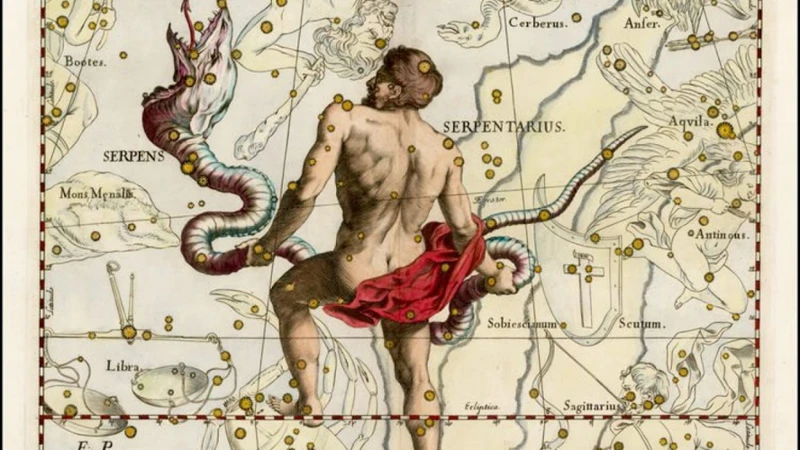
In Norse mythology, the serpent, known as Jormungandr, played a significant role in shaping the cosmos and the impending doom of the gods. Jormungandr was a massive serpent that encircled the world, biting its own tail, forming a fearsome loop of destruction. According to the Norse belief of Ragnarok, the final battle between the gods and giants, Jormungandr would emerge from the depths of the ocean to battle Thor, the god of thunder. Their clash would result in their mutual demise, and the world would be plunged into chaos. The image of the serpent represented the forces of chaos and destruction that were an inevitable part of the Norse cosmology. It underscored the fragile balance between order and chaos, and the ultimate fate of the gods and the world they inhabited.
The Serpent Jormungandr
In Norse mythology, the serpent Jormungandr, also known as the Midgard Serpent, held a significant role. According to the ancient tales, Jormungandr was one of the three children of the trickster god Loki and the giantess Angrboda. This serpent grew to enormous size, encircling the entire realm of Midgard, the world of humans. It was said that Jormungandr was so long that it could grasp its own tail, forming a never-ending loop. This powerful symbol of infinity and eternity captured the imagination of the Norse people.
Jormungandr’s presence as a serpent had foreboding implications. It was believed that during the mythical event of Ragnarok, the end of the world, Jormungandr would release its tail and rise from the depths of the sea, engaging in a cataclysmic battle against the gods. This epic clash would result in widespread destruction, with Jormungandr being one of the major figures causing chaos and devastation.
The importance of Jormungandr extended beyond its role in the apocalyptic event. It represented primal forces of nature, and its existence served as a reminder of the precarious balance between order and chaos in the Norse cosmos. Jormungandr’s presence was a constant reminder of the ever-looming threat and the cyclical nature of existence.
It is important to note that Jormungandr’s depiction was not inherently malevolent. While it played a destructive role during Ragnarok, the serpent was not seen as inherently evil but rather as a force of nature fulfilling its destined role. This nuanced understanding showcases the intricate worldview of Norse mythology.
The story of Jormungandr and its symbolism provided the Norse people with lessons about the fragility of their world and the inevitability of its demise. It instilled a sense of awe, humility, and recognition of the forces beyond human control. The serpent Jormungandr remains an enduring symbol in Norse mythology, representing the complexities of the natural world and the eternal cycle of creation and destruction.
The Serpent in the Story of Ragnarok
The Serpent in the Story of Ragnarok is a crucial element in Norse mythology. According to the myth, the serpent, known as Jormungandr or the Midgard Serpent, is one of the monstrous offspring of the trickster god Loki and the giantess Angrboda. Jormungandr is a massive sea serpent that stretches so long it encircles the entire world, grasping its own tail. An integral part of the apocalyptic event known as Ragnarok, Jormungandr battles against the god Thor during the climactic final battle. Their encounter signifies the ultimate conflict between chaos and order, leading to the destruction and rebirth of the world.
In the story, Jormungandr’s poison is so potent that even the gods fear its venom. As the battle rages, Thor manages to slay the serpent with his powerful strikes from his hammer, Mjolnir. However, Thor, too, is fatally wounded by Jormungandr’s venomous bite, succumbing to the serpent’s deadly influence shortly after his victory. This intertwined fate of the Midgard Serpent and Thor symbolizes the cyclical nature of life and death in Norse mythology, emphasizing the inevitability of destruction and renewal.
The fate of Jormungandr in the myth of Ragnarok showcases the significance of the serpent as both a harbinger of chaos and a catalyst for transformation. Its presence represents the chaotic forces that exist in the world and highlights the delicate balance between order and disorder. The destruction caused by Jormungandr’s battle reinforces the Norse belief in the necessity of destruction for the rebirth and renewal of the world. In this way, the serpent in the Story of Ragnarok serves as a powerful symbol of the eternal cycle of creation and destruction that permeates Norse mythology.
The Serpent in Mesoamerican Cultures

The serpent held great significance in the cultures of Mesoamerica, including the Aztec, Maya, and Olmec civilizations. One of the most prominent serpent deities was Quetzalcoatl, the Feathered Serpent, who was revered as a benevolent entity associated with wisdom, creation, and fertility. Quetzalcoatl was often depicted with vibrant feathered wings and a serpent’s body, representing the union of earth and sky. The Aztecs believed that Quetzalcoatl was responsible for the creation of humanity and agriculture. Another important Mesoamerican serpent deity was Kukulkan (also known as Quetzalcoatl among the Maya), who was worshipped as a god of wind, rain, and knowledge. The serpent’s association with knowledge and wisdom can also be seen in the Aztec and Maya calendars, where the serpent served as a symbol of time and cosmic cycles. It is clear that serpents held a revered and multifaceted role in Mesoamerican cultures, embodying concepts of creation, fertility, divine wisdom, and the cyclical nature of existence.
The Feathered Serpent Quetzalcoatl
The Feathered Serpent, known as Quetzalcoatl in Mesoamerican cultures, held significant importance in the mythology and belief systems of the Aztecs, Mayans, and other indigenous peoples of Central America. Quetzalcoatl was a revered deity associated with various domains, including creation, wind, and wisdom. This feathered serpent was often depicted as a composite creature, blending the features of a serpent with the vibrant plumage of a bird, such as the quetzal bird.
Quetzalcoatl represented the duality of life and death, as well as the cycles of nature. The serpent aspect of Quetzalcoatl highlighted its connection to the earth and its underworld, while the bird aspect brought associations of the sky and heavens. This amalgamation of serpent and bird symbolized the harmonious balance between these realms.
Quetzalcoatl was also associated with knowledge and enlightenment, often described as a benevolent god who shared wisdom with humanity. According to legend, it was Quetzalcoatl who taught the Aztecs various arts, including agriculture, writing, and the calendar. This emphasized the serpent’s role as a bringer of civilization and progress.
The plumed serpent’s presence extended beyond mythology and spirituality into architectural motifs and artistic representations. The famous Pyramid of the Feathered Serpent, also known as the Temple of Quetzalcoatl, in Teotihuacan, Mexico, features intricate carvings and reliefs depicting the feathered serpent. The depiction showcases the splendid feathers seamlessly blending with the serpent’s scaled body, highlighting the cultural significance of Quetzalcoatl.
The Feathered Serpent Quetzalcoatl held immense symbolic value in Mesoamerican cultures. Its representation as a merging of serpent and bird embodied the balance between earthly and celestial realms. As a deity associated with creation, wisdom, and civilization, Quetzalcoatl left a lasting imprint on the myths, art, and architecture of the Aztecs, Mayans, and other indigenous cultures of Central America.
The Serpent in Mayan and Aztec Mythology
In Mayan and Aztec mythology, the serpent played a significant role, representing both creation and destruction. The Feathered Serpent, known as Quetzalcoatl in Aztec mythology and Kukulkan in Mayan mythology, was one of the most revered deities. This serpent god was associated with various aspects, including wisdom, fertility, and the cycles of life. Quetzalcoatl was often depicted with feathered wings, symbolizing the connection between the heavens and the earth. The legend of Quetzalcoatl speaks of his role in creating humanity and bringing knowledge and civilization to the people. However, the serpent’s symbolism was not limited to benevolent aspects. In Aztec mythology, there was another serpent deity known as Tlaltecuhtli or “Earth Lord,” who represented the destructive forces of the earth. This serpent demanded sacrifices to appease its hunger and maintain the balance of the world. The complex nature of the serpent in Mayan and Aztec mythology reveals a duality of creation and destruction, showcasing the interconnectedness of life and the natural world.
Keywords: Mayan and Aztec mythology, serpent symbolism, Feathered Serpent, Quetzalcoatl, Kukulkan, creation and destruction, serpent deities, mythology, ancestral beliefs.
The Serpent in Biblical References
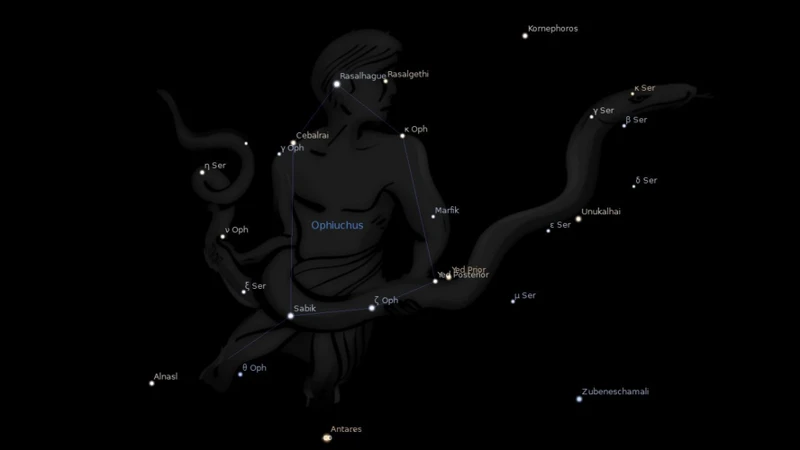
The serpent holds significant symbolism in biblical references, representing both temptation and evil. In the story of the Garden of Eden, the serpent tempts Eve with the forbidden fruit, leading to the fall of humanity and the introduction of sin into the world. This serpent is often associated with Satan, the embodiment of evil and deception. Another notable biblical reference to serpents is found in the story of Moses and the Brass Serpent. In this narrative, when the Israelites were plagued by venomous snakes, Moses was instructed by God to fashion a bronze serpent and raise it on a pole. Those who looked upon the serpent were healed, symbolizing redemption through faith. The serpent in biblical references serves as a cautionary symbol of the consequences of succumbing to temptation and the potential for redemption through faith.
The Serpent in the Garden of Eden
The Serpent in the Garden of Eden holds a significant place in biblical references. According to the Book of Genesis, the serpent played a pivotal role in the story of Adam and Eve. It is portrayed as a cunning and deceptive creature that tempts Eve into eating the forbidden fruit from the Tree of Knowledge. This act leads to the fall of humanity and the expulsion of Adam and Eve from Paradise. The serpent’s persuasive words and manipulation of Eve symbolize the presence of evil and temptation. Its role as a seducer highlights the eternal struggle between good and evil, moral choices, and the consequences of human actions. The serpent’s punishment, which includes being cursed to crawl on its belly and the enmity between itself and humanity, serves as a reminder of the repercussions of disobedience. This biblical tale has shaped the perception of serpents as deceitful and dangerous beings, representing the eternal clash between righteousness and sin.
The Serpent in the Story of Moses and the Brass Serpent
In the story of Moses and the Brass Serpent, as mentioned in the Bible, the serpent takes on a symbolic role. According to the Book of Numbers, the Israelites were attacked by venomous snakes as a punishment for their disobedience to God. As the people suffered, Moses sought divine guidance and was instructed to create a bronze serpent and place it on a pole. The remarkable aspect of this story lies in the serpent’s symbolism of salvation and healing. The afflicted Israelites were told to look upon the bronze serpent, and those who did were cured of the snakebites. This iconic image of a serpent on a pole has endured throughout history and is often associated with the medical profession in the form of the caduceus. The serpent in this story represents both punishment and redemption, serving as a tangible symbol of God’s power to heal and restore. It illustrates the belief in divine intervention and the importance of faith in overcoming adversity.
The Serpent as a Symbol of Evil and Temptation
In various cultures and religious contexts, the serpent has been closely associated with evil and temptation. This negative connotation can be traced back to biblical references, most notably the story of Adam and Eve in the Garden of Eden. According to the biblical narrative, the serpent appears in the form of a deceitful creature who tempts Eve to disobey God’s command by eating the forbidden fruit from the Tree of Knowledge. As a result, this act of temptation leads to the fall of humanity and the introduction of sin into the world. The serpent’s role in this story has come to symbolize the seductive nature of temptation and the consequences of disobedience.
Beyond biblical references, the serpent’s association with evil and temptation can also be found in other mythologies and cultures. In ancient Greek mythology, for instance, the serpent is tied to the figure of Medusa, a Gorgon with serpents for hair. Medusa’s gaze had the power to turn anyone who looked at her into stone, representing the danger and allure of temptation.
The serpent’s symbolism of evil and temptation extends beyond its mythical associations. In many belief systems, serpents or snake-like creatures are often seen as deceitful, cunning, and dangerous. The sleek and stealthy nature of serpents, combined with their ability to strike suddenly, has led to their portrayal as symbols of treachery and maliciousness.
While the serpent’s symbolic association with evil and temptation may vary across cultures, there is a common thread that emphasizes the pitfalls of giving in to temptation and straying from the path of righteousness. The serpent serves as a cautionary reminder of the power temptation holds and the potential consequences that can arise from succumbing to its allure.
Conclusion

In conclusion, the symbolism of serpents in different cultures is a captivating subject that reveals the rich tapestry of human beliefs and mythologies. Throughout history, the serpent has been a powerful emblem, embodying a wide spectrum of meanings and associations. From the ancient Egyptians who saw it as a symbol of rebirth and renewal, to the Greeks who associated it with wisdom and knowledge, and the Hindus who recognized it as a representation of Kundalini energy, the serpent has left an indelible mark on cultural narratives and religious beliefs. Norse mythology featured the monstrous serpent Jormungandr, while Mesoamerican cultures revered the feathered serpent Quetzalcoatl. Even in biblical references, the serpent played a significant role as a symbol of both temptation and evil. The intricate layers of interpretation surrounding the serpent showcase the diverse perspectives and beliefs across civilizations. As we delve into the symbolism of serpents, we are reminded of the vastness of human imagination and the universal fascination with these enigmatic creatures. Whether perceived as a harbinger of wisdom, a figure of fear, or a symbol of eternal renewal, the serpent continues to captivate our collective consciousness, leaving us in awe of its enduring symbolism.
Frequently Asked Questions
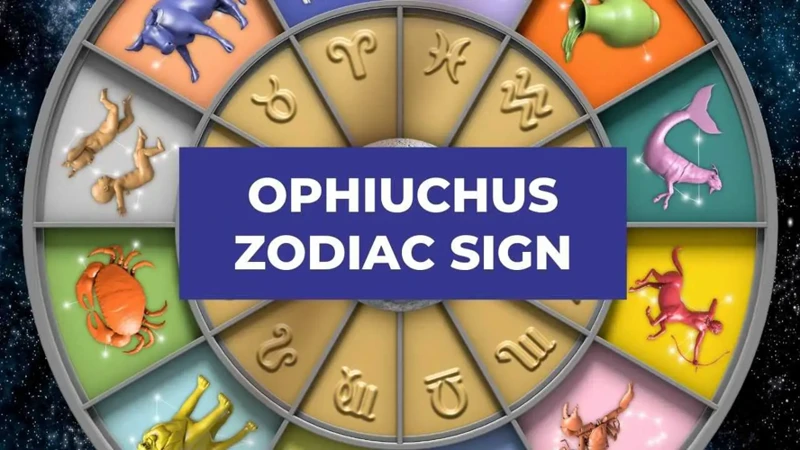
1. How did the serpent symbolize rebirth and renewal in ancient Egyptian culture?
In ancient Egyptian culture, the serpent symbolized rebirth and renewal due to its shedding of its skin. This process of shedding represented the cycle of life, death, and rebirth, leading to the belief in eternal life.
2. Who was the goddess Wadjet in ancient Egypt and what role did she play?
Wadjet was a prominent goddess in ancient Egyptian culture, often depicted as a cobra or a lioness. She was the protector and patron of the pharaohs, providing them with guidance and guarding them against evil forces.
3. What is the significance of the ouroboros symbol in ancient Egypt?
The ouroboros, an image of a serpent eating its own tail, held great significance in ancient Egypt. It symbolized the eternal cycle of creation and destruction, representing the unending nature of life and the cosmos.
4. How did the serpent feature in Egyptian mythology?
In Egyptian mythology, the serpent played a significant role. The snake god Apophis, known as the enemy of the sun god Ra, represented chaos and was seen as a formidable adversary. This myth highlighted the constant struggle between order and chaos in the Egyptian worldview.
5. Did the serpent symbolize wisdom and knowledge in Greek mythology?
Yes, in Greek mythology, the serpent was often associated with wisdom and knowledge. It was believed that serpents possessed secret knowledge and the ability to communicate with divine entities.
6. Who was Medusa in Greek mythology and what role did the serpent play in her story?
Medusa was a Gorgon in Greek mythology, known for her hair made of serpents. She was said to have the power to turn anyone who looked at her into stone. The serpents on her head symbolized her monstrous nature and the divine punishment she received.
7. What was the role of serpents in the Oracles of Delphi in Greek mythology?
In Greek mythology, the Oracles of Delphi were believed to be able to access divine wisdom. The priestess Pythia, who delivered prophecies, was said to be possessed by the spirit of the serpent Python. This connection to the serpent symbolized the link between the mortal and the divine.
8. How is the serpent depicted in Hinduism?
In Hinduism, the serpent is seen as a powerful symbol of Kundalini energy, which represents the spiritual awakening and enlightenment of an individual. It is portrayed as a coiled serpent, resting at the base of the spine and symbolizing dormant potential energy.
9. Who is the serpent god Shesha in Hindu mythology?
Shesha is a prominent serpent god in Hindu mythology, often portrayed as a thousand-headed serpent. He serves as the bed and canopy for the god Vishnu, representing his protection and support for the universe.
10. How does the serpent feature in biblical references?
In biblical references, the serpent is associated with themes of evil and temptation. The serpent in the Garden of Eden tempts Eve to eat the forbidden fruit, resulting in the Fall of Man. It symbolizes the deceptive and sinful nature that leads humans astray.
References
Frequently Asked Questions

1. What is the significance of serpents in different cultures?
The symbolism of serpents varies across different cultures, but generally, serpents represent concepts such as rebirth, wisdom, knowledge, protection, and temptation.
2. Why are serpents associated with rebirth and renewal?
Serpents are often associated with rebirth and renewal due to their ability to shed their skin and emerge as a new creature. This process symbolizes personal transformation and the cycle of life.
3. How are serpents portrayed in Egyptian mythology?
In Egyptian mythology, serpents were seen as powerful and divine creatures. They were often associated with deities and considered protectors of the pharaohs. The serpent was also associated with the afterlife and the journey to the underworld.
4. What is the connection between serpents and wisdom in Greek mythology?
In Greek mythology, serpents were often associated with wisdom and knowledge. The symbol of the serpent was linked to the god Apollo, who was known as the god of wisdom. The ancient Greeks believed that serpents had the ability to impart knowledge and reveal hidden truths.
5. Who is Medusa and how is she connected to serpents in Greek mythology?
Medusa was a monstrous creature in Greek mythology whose hair was made of serpents. Anyone who looked into her eyes would turn to stone. The serpents in her hair symbolized her monstrous nature and her connection to the underworld.
6. What role did serpents play in Hinduism?
In Hinduism, serpents are seen as symbols of power and divine energy. They are associated with Kundalini energy, which is believed to be coiled at the base of the spine and represents spiritual awakening. The serpent god Shesha is also revered in Hindu mythology.
7. Who is Jormungandr in Norse mythology?
Jormungandr is a serpent-like creature in Norse mythology, also known as the Midgard Serpent. It is one of the children of the trickster god Loki and plays a significant role in the events leading up to Ragnarok, the end of the world.
8. Who is Quetzalcoatl and what is their significance in Mesoamerican cultures?
Quetzalcoatl is a feathered serpent deity worshipped by the Aztecs and other Mesoamerican cultures. They are associated with creation, fertility, and the bringer of civilization. Quetzalcoatl is often depicted as a divine ruler and a wise teacher.
9. What is the biblical significance of serpents?
In the Bible, serpents are often associated with evil and temptation. The most well-known reference is the serpent in the Garden of Eden, who tempts Adam and Eve to eat the forbidden fruit. Serpents are also mentioned in the story of Moses and the brass serpent as a symbol of healing and protection.
10. Why are serpents such a prevalent symbol in different cultures?
Serpents have fascinated humans for centuries due to their mysterious nature and potent symbolism. The association of serpents with concepts such as rebirth, wisdom, protection, and temptation makes them powerful symbols that resonate across different cultures and belief systems.
References
- The Symbolism Of The Snake : Enigmatic Meanings …
- Serpent symbolism
- Serpentine Symbolism in Myth and Culture






